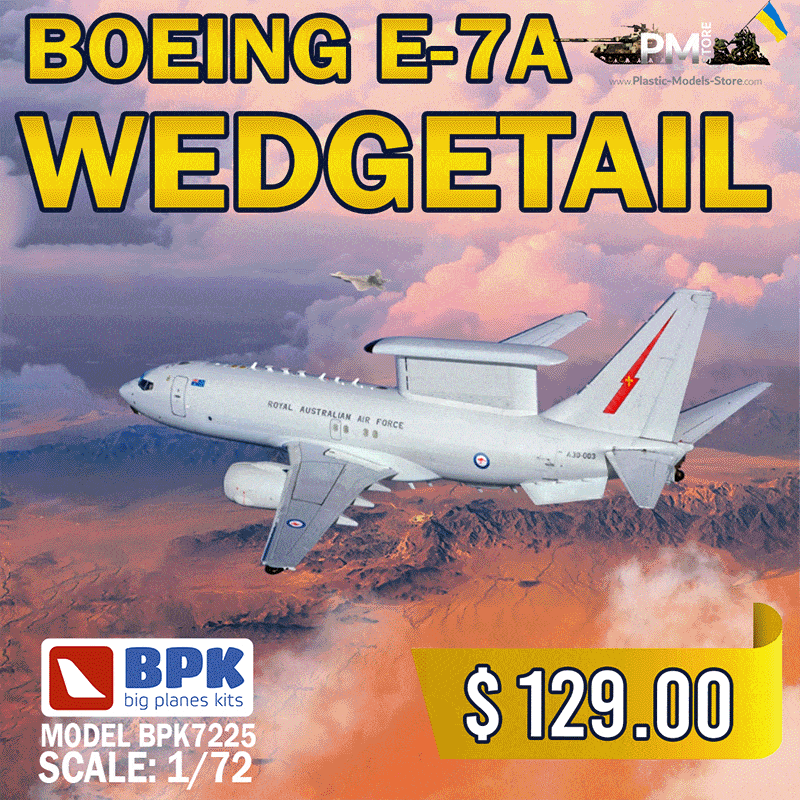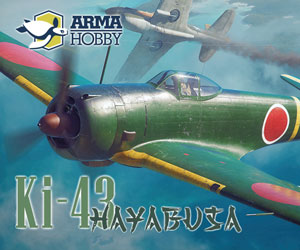
Background
Eduard have continued their series of superb 1:48 mid- and late-variant Bf 109s with the ultimate wartime version, the Bf 109K-4 Kurfürst. It was produced in an effort to consolidate the myriad of production variations in the autumn of 1944 into a single, standardised version that combined all the latest refinements to not only ease production, but also attempt to close the widening performance gap compared with the latest Allied fighters.
The Kurfürst reintroduced outer wheel covers and a retractable tail wheel, and some airframes sported aileron trim tabs. Armament comprised a 30mm MK 108 cannon firing through the spinner, plus a pair of 13mm MK 131s mounted above the engine. The Daimler-Benz DB 605 DB/DC was fitted with a broad-blade propeller and could use MW 50 methanol-water injection to produce some 1,600-1,850hp, giving the aircraft a top speed of around 440mph.
So, on paper, the Bf 109K-4 Kurfürst was pretty much on a par with the Allied fighters that it faced, but it was hamstrung by shortages of materials and falling production standards and, critically, the Luftwaffe training programme had collapsed to the point where new pilots were being sent to operational units with a fraction of the experience of their also numerically superior opponents, with predictable results.
The total number of Bf 109Ks produced is unknown because records were lost in the chaos that followed the collapse of Nazi Germany, but most sources estimate over 750, almost all of them the 'K-4 Kurfürst.
The Kit
Eduard's Kurfürst arrives in a large and very classy top-opening box. I'd have been tempted to say the box is maybe a tad too large to guarantee keeping the contents secure in transit, but everything was perfectly intact in my kit, so the designers obviously know what they're doing. The kit comprises:
128 x dark grey styrene parts (plus 4 not needed)
11 x clear styrene parts
52 x photo-etched parts - some pre-coloured
A sheet of die-cut kabuki tape painting masks
Decals for 9 colour schemes
A nice touch is that Eduard have included spares for some of the smaller parts - e.g. the aileron mass balances that are notorious for getting damaged and/or lost on Bf 109 kits.







Anyone familiar with Eduard's excellent 1:48 Bf 109s will have a pretty good idea what to expect, and the Kurfürst doesn't disappoint. The moulding is top-quality throughout, with state-of-the-art detailing. That said, I did note a few minor sink-marks - most of them hidden on the reverse side of parts, but a couple will need attention.
The surface finish comprises beautifully subtle engraved panel lines and embossed rivets, plus rib tapes on the fabric areas. Purists may correctly point out that panel lines etc. were widely filled and sanded on the full-sized airframes, and that rib tapes on kits are almost inevitably over-scale - but I think Eduard have found an ideal compromise that will look great when painted. And, of course, you can always tailor the finish to your personal taste (I probably will knock back the rib-tapes a bit).


Test Fit
Seeing as the Kurfürst uses new moulds, I've done a dry-assembly of the main components rather than assume nothing's changed. The conclusion?... nothing's changed(!); the fit throughout is superb, and I'd recommend the basic kit to anyone with a little experience. My only gripe? - the pitot tube moulded integrally with the wing; it took a knock straight away, despite being ultra-careful removing the parts from the runners. (I decided to slice it off to save worrying about it, so I can re-attach later.)
A Few Details
Construction begins with the cockpit, and you'll notice a few changes compared with other Bf 109 variants. The massive breech cover dominates the space between the rudder pedals, and there's a change on the starboard side of the "office", with a console on the floor alongside the seat and a new circuit-breaker panel on the sidewall. The classic fuel pipe with its clear section on the starboard sidewall has gone, along with the oxygen regulator which was moved down into the floor console.
The kit cockpit consists of 30+ parts, the exact count depending on whether you use all the photo-etched details. Eduard offer a couple of alternatives, with either styrene or etched rudder pedals, and a choice of a moulded instrument panel with a decal overlay or a pre-coloured photo-etch "sandwich". There's an etched seat harness with separate lap pads which will look excellent if you curl shape it carefully.









The tailwheel well includes an elevator actuator, but most references show the doors closed when the tailwheel was in the lowered position. Note: There are some photos with the doors open, but perhaps this was to allow servicing?
A neat touch is the inclusion of a template to scribe the small access panels ahead of the windscreen which would otherwise be likely to be lost when sanding the seam.

Eduard offer a choice of rudders - the difference being in the style of the fairing for the navigation lamp.

The mainwheel wells are nicely detailed and fully boxed-in, while the radiators are supplied with etched faces. To be honest, these are largely invisible on the finished model, so you may opt to use the moulded versions and save the etched grills for other uses.


The Kurfürst was unique among Bf 109s in introducing ailerons with operable trim tabs. These weren't always fitted, and Eduard offer a choice of the standard style too.

The undercarriage is neatly detailed and the mainwheels are fitted with the larger smooth tyres seen on late-model '109s. These are moulded in halves, so you'll have a seam to deal with while trying not to damage the delicate ribbing. (Eduard offer Brassin wheels as an aftermarket upgrade, and these could be well worth fitting with their finer detail and weighted tyres.)





The propeller is a very straightforward assembly, and the shape of the spinner looks good.


The exhausts can be fitted with photo-etched shields, but moulded versions are included if you prefer. The later are the only parts where sink marks are an issue, but they'll be simple to sort out.



The kit includes a choice of three styles of drop-tanks. Eduard don't supply the retaining strap, but this can made easily with a strip of thin plastic card.
One point which Eduard have missed is that the Bf 109K introduced mainwheel position indicators on the upper surface of the wings. Again, these will be straightforward to add as a finishing touch.

Finally, the clear parts are beautifully produced, and the canopy can be displayed open and is fitted with grab-handles and lock. Eduard supply a set of die-cut painting masks for the canopy, head armour and wheels.


Instrucions & Decals
The kit comes with an excellent set of instructions that are printed as a high-quality magazine-style 28-page A4 booklet. Things kick off with a 4-page historical overview, complete with reference photos, before breaking down construction of the kit with clear illustrations. The sequence is pretty logical, but experienced modellers will no doubt have their own preferred way of tackling things - especially to make painting easiest.
On that point, Eduard include colour matches for Gunze Sangyo model paints throughout.




The kit provides decals for a whopping 9 colour schemes which offer plenty of variation and challenges:
A: Bf 109K-4, Fw. Hans Strebel, 11./JG 3, Franzfelde airfield near Pasewalk, Germany, March 1945

B: Bf 109K-4, 9./JG 4, Flensburg airfield, Germany, May 1945

C: Bf 109K-4, 6./KG(J) 6, Klecany airfield, Protectorate of Bohemia and Moravia, May 1945

D: Bf 109K-4, 5./JG 11, Strausberg Airfield, Germany, early 1945

E: Bf 109K-4, 12./JG 27, Prague-Kbely airfield, Protectorate of Bohemia and Moravia, May 1945

F: Bf 109K-4, Maj. Wilhelm Batz, CO of II./JG 52, Zeltweg, Austria, May 1945

G: Bf 109K-4, Lt. Horst Potreck, Stab III./JG 53, Kreuzstrasse near Holzkirchen, Germany, April 1945

H: Bf 109K-4, W.Nr. 330177, Uffz. Alfred Nitsch, 12./JG 77, Neuruppin, Germany, November 1944

I: Bf 109K-4, W.Nr. 333878, S. Ten Umberto Gallori, 3a Squadriglia, Io Gruppo Caccia, Lonate Pozzolo, Italy, March 1945

The decals look to be very good quality, and are printed with pin-sharp registration. In common with recent Eduard decals, they are glossy with quite a prominent carrier film. This is initially a bit off-putting, but I've found they snuggle down very well in use.
I'll be the first to admit that I've been pretty much "off grid" for a while when it comes to modelling, so I'm amazed to find out from Eduard that the rumour-mill's been busy suggesting that their latest decals are peel-off stickers! What? How does this nonsense start?
So, for the record: These are standard waterslide decals.
Eduard have a handy How-To page for getting the best results: https://info.eduard.com/en/how-to-apply-eduard-decals

Something I'm not so keen on is the way the colours (excepting black and white) are printed as a pattern of very fine dots. Admittedly, the dots are VERY fine, but I have to say I prefer Eduard's older decals from a few years ago which, in my opinion, were among the best available.

The kit comes complete with a very comprehensive set of stencil markings (in my kit there were two sheets, but I think this must have been a packaging error), and these are backed up with a very useful full-page placement diagram.


Conclusion
The Kurfürst is an excellent addition to Eduard's superb series of state-of-the-art 1:48 late-war Bf 109s. Despite this being a ProfiPACK kit, it's not overly complex and should be suitable for any modeller with a bit of experience under their belt because you use as many or as few of the photo-etched details as you wish. Highly recommended.
Item #11177 is available now from Eduard - Price: £22.97 plus P&P.
Expect a street price of just under £30.00 in the UK. I bought my model from Upstairs Downstairs in Sandown - an essential stop-off for modellers visiting the Isle of Wight.
Please remember, when contacting retailers or manufacturers, to mention that you saw their products highlighted here - on AEROSCALE




























